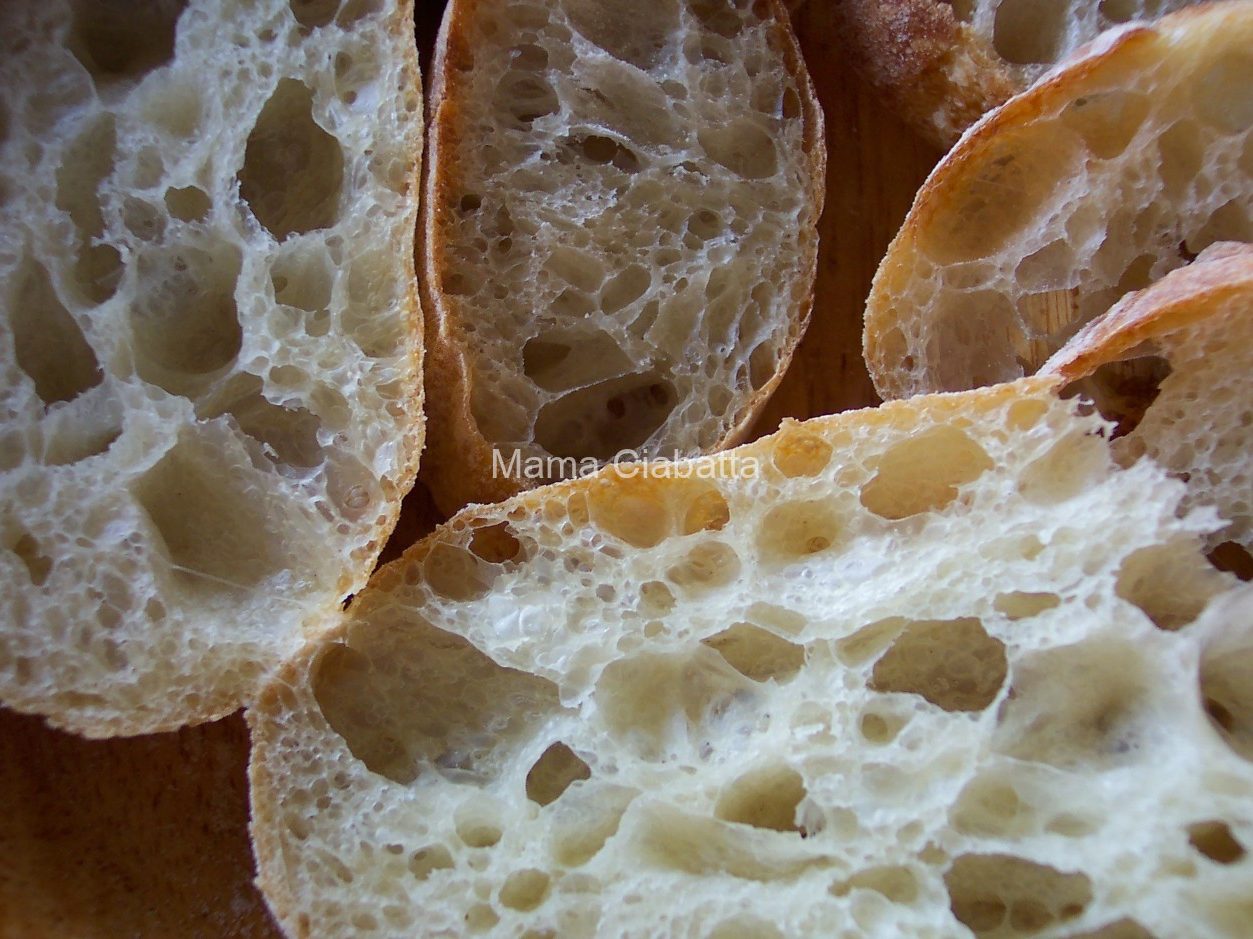Every bread connoisseur values the crust of the bread as much as the crumb development. A hot and steamy environment for your bread is crucial during the first 10-15 minutes of baking. The easiest way to keep the oven steadily hot during baking is to use a pizza stone. A good pizza stone can be expensive. Bakers came up with an excellent and inexpensive solution. I am talking about non-glazed ceramic tiles from your local building store. This has been my choice for many years.
Some bakers prefer to tile two oven shelves rather than one. In this case, you bake the pizza on the bottom layer of the tiles. The top layer has an additional thermal effect on the top layer of pizza. Thus, the top and the bottom of the pizza are crisp. This can be useful for baking thicker pizza varieties, like deep-dish pizza. Keep in mind that the oven will take even longer to warm up. Experiment and decide for yourself, which is more convenient.
I place the tiles on the oven shelf right before heating. Many years ago, I “hardened” my tiles by gradually heating them in several steps. This allowed the tiles to adapt to the temperature. The tiles should always cool down gradually. Ceramics dislike sudden changes in temperature. They give away accumulated heat slowly.

Home bakers also need an additional source of steam during the first 10-15 minutes of baking. It is especially important for bread made with white flour. Most professional ovens have a built-in steam option. Home bakers are less fortunate that way and have to improvise. There are two basic ways to make sure your bread is surrounded with enough steam during the first stage of baking.
The first option is to use a heavy metal dish or a skillet on the bottom shelf of your oven. You preheat the oven with this dish or a skillet inside. I use two quarter-sheet aluminum pans sandwiched together.
The upper pan gets warped because of the temperature shock. I saw YouTube videos where bakers threw ice directly into the bottom of the oven. I would not advise you to do that, even if your heating element is covered with something. Two aluminum pans are a very inexpensive solution.
Plus, if you bake pizza, you should have a pizza stone or a set of ceramic tiles for your oven.
I slide the bread from the pizza peel onto the ceramic tiles and put 5 medium pieces of ice into my sandwiched aluminum pans. This creates enough steam for a good crust and oven spring of my bread. Temperature settings and timing are in my recipe posts.

Another option would be to use a large Dutch oven. Sometimes I use that option too. In fact, this is my new favorite way of baking sourdough bread. It does not require any ice or aluminum trays on the bottom shelf of the oven.
I preheat my Dutch oven to 482°F (250°C). Meanwhile, I prepare two large heat-resistant coasters on the kitchen counter. One coaster is for the Dutch oven and the other is for the lid. When I hear the signal from my oven announcing the end of the preheating, I bring the Dutch oven to the counter.
I take the bread out of the basket and put it on a piece of parchment paper, slightly wider than your bread. It should be long enough for you to hold it by the ends and safely transfer your bread inside the hot Dutch oven.
Then I put the lid back on and place the Dutch oven back inside the oven for 25 minutes.
After that, I take the lid off and continue baking without the lid, but still inside the Dutch oven for 10 more minutes.
To finish baking, I take the Dutch oven out and transfer the bread into a baking pan. That way, I have a better chance of not burning the bottom of the bread.
I lower the temperature of the oven to 425°F (218°C) and bake for 10-15 minutes more. The timing depends on the size of the bread. Check on your bread often and adjust the timing if necessary.
A few comments about different ovens and steam.
My new oven does not like the tile-steam combo that much. I have a convection oven and the oven fan started making some noise at the beginning of the preheating cycle.
I used to have an oven without convection before, and a lot of steam was fine for it. Just make sure you do not drop your ice cubes on the bottom heating element or onto the bottom floor of the oven.
Taking all this into consideration, baking bread in a Dutch oven seems to be safer for your oven.
Your oven could be more steam-tolerant. Bread baking certainly decreases the life expectancy of domestic ovens. I am aware of that and I still choose to bake my bread. Decide for yourself.
Ceramic tiles are wonderful for pizza and a variety of flatbreads (no ice cubes required). A serious home baker has to use both methods.
Choose the option that works best for you. Happy baking!










